Ceramic stove tops are popular in modern kitchens for their sleek and sophisticated design. They add a contemporary touch to any cooking space and are favored for their smooth, flat surfaces that are generally easier to clean compared to traditional gas burners. However, maintaining the pristine appearance of ceramic stove tops can be challenging due to their susceptibility to spills, stains, and built-up grime.
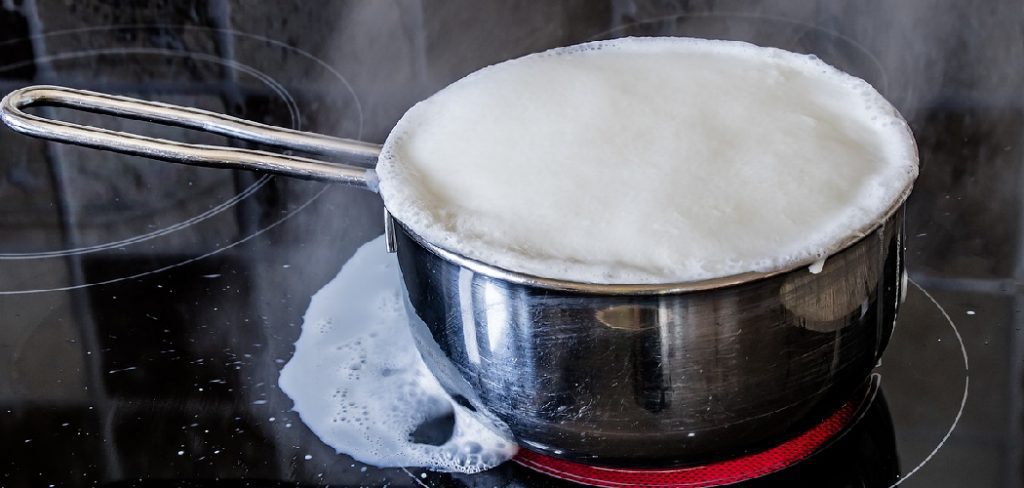
The smooth glass-ceramic surface, while elegant, can quickly show smudges and residue, making regular maintenance necessary. This article aims to equip you with practical tips and step-by-step instructions on how to clean ceramic stove tops effectively. By following these guidelines, you can keep your ceramic stove top looking new while ensuring a hygienic cooking environment. Whether you’re dealing with a simple spill or stubborn, baked-on stains, you’ll find solutions to maintain your ceramic stove top’s sparkling, polished appearance.
Understanding the Surface of a Ceramic Stove Top
Composition and Features of Ceramic Stove Tops
Ceramic stove tops are constructed from a glass-ceramic material, offering a smooth, shiny appearance that complements any modern kitchen. This material is favored for efficiently distributing heat across the cooking surface, allowing food to cook evenly. Despite its sleek appeal, the surface requires careful handling to avoid scratches or damage, as it is prone to marking if not cleaned properly. Ensuring the longevity of a ceramic stove top hinges on understanding its composition and employing the right cleaning techniques to maintain its glossy finish.
Common Stains and Build-up
Ceramic stove tops often collect stains from burnt food, grease, and water spots, which can mar the otherwise pristine surface. These common blemishes result from everyday cooking activities and can be challenging to remove if they accumulate over time. The delicate nature of the ceramic material demands gentle cleaning methods that effectively tackle these pesky stains without causing irreversible damage. Regular maintenance, paired with suitable cleaning products, is essential to preserve the integrity and appearance of your ceramic stove top, ensuring it remains a centerpiece of your kitchen for years to come.
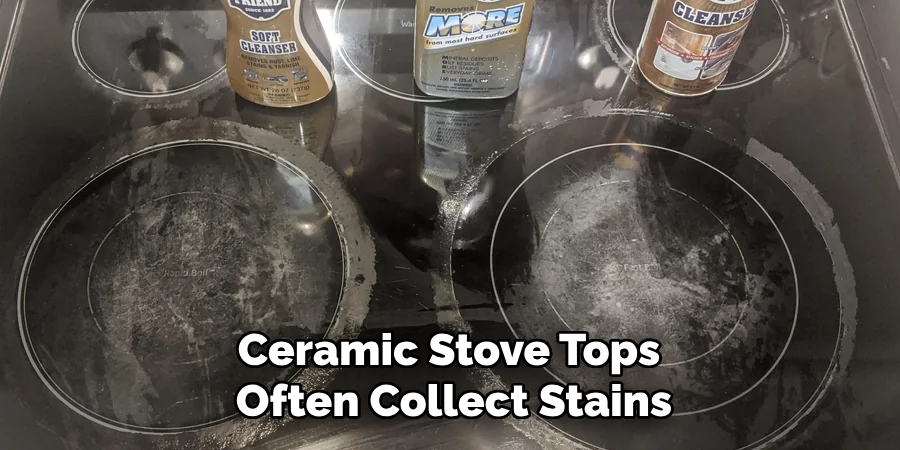
Preparing Your Ceramic Stove Top for Cleaning
Turn Off the Stove and Let It Cool
Before beginning the cleaning process, it is crucial to turn off the stove and allow it to cool completely. This step is essential to avoid burns or injuries from touching a hot surface. To ensure the surface temperature is safe, wait at least 20 minutes after use or check by carefully bringing your hand near (without touching) to feel for any residual heat.
Gathering Cleaning Supplies
Gather supplies such as non-abrasive cleaners, microfiber cloths, soft sponges, and vinegar for effective and safe cleaning. These items will help clean the stove top without causing unwanted scratches or damage. It is important to refrain from using harsh chemicals or abrasive scrubbers known to harm the delicate glass-ceramic surface. You can maintain the stove top’s aesthetic appeal and functionality by using the appropriate materials.
Routine Cleaning for Daily Maintenance
Cleaning Spills and Splashes Quickly
To maintain the pristine appearance of your ceramic stove top, it’s crucial to address spills and splashes promptly. Use a damp cloth or paper towel to gently wipe away any fresh spills or grease before they set. To ensure effective cleaning, apply a small amount of mild dish soap to the cloth and carefully clean the affected area. Wiping down the stovetop after each use helps prevent stains from hardening, keeping your cooking surface clean and well-maintained.
Maintaining a Streak-Free Shine
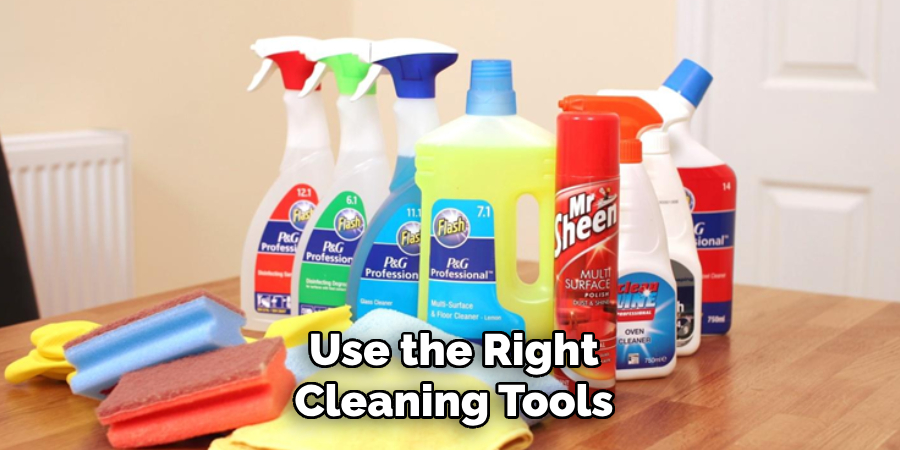
Use the right cleaning tools to achieve a streak-free shine on your ceramic stove top. After removing spills, use a microfiber cloth paired with a glass cleaner or a vinegar solution to polish the surface. Gently buff the area in circular motions to avoid streaks, ensuring a gleaming, spotless finish. This method enhances the stove top’s shiny appearance and helps maintain its elegant look over time, making it a focal point in your kitchen that you can be proud of.
Tips for Preventing Stains
Preventative measures are essential for preserving the beauty of a ceramic stove top. Immediately wiping up spills, using stove covers to minimize direct contact with the surface, and keeping burners clean are effective strategies. By being proactive, you can reduce the risk of permanent stains and ensure your stove top remains in excellent condition.
How to Clean Ceramic Stove Tops: Deep Cleaning and Removing Stubborn Stains
Using Baking Soda and Vinegar
Consider using baking soda and vinegar as a natural, non-toxic solution to remove stubborn stains from your ceramic stove top. Start by generously sprinkling baking soda over the stained area. Next, fill a spray bottle with white vinegar and liberally spray it over the baking soda, causing it to fizz.
Allow the mixture to sit for about 15 minutes. This reaction helps to break down grime and loosen tough stains. After the mixture has settled, moisten a soft sponge or cloth and gently scrub the surface in circular motions. Make sure to avoid using excessive pressure to prevent scratching the ceramic. Once the stains have been lifted, use a clean, damp cloth to wipe away any residue, ensuring the surface is clean and shiny.
Commercial Ceramic Stove Top Cleaners
Several commercially available cleaners are specifically formulated for ceramic stove tops, providing effective solutions for tough stains or burnt-on food. When selecting a cleaner, look for products such as Cerama Bryte or Weiman, which are well-reviewed for their efficacy. Always follow the manufacturer’s instructions for best results and exercise caution, using gloves if necessary to protect your skin. These cleaners typically require applying a small amount onto the stovetop and wiping it with a soft cloth, ensuring a polished finish without scratching the surface.
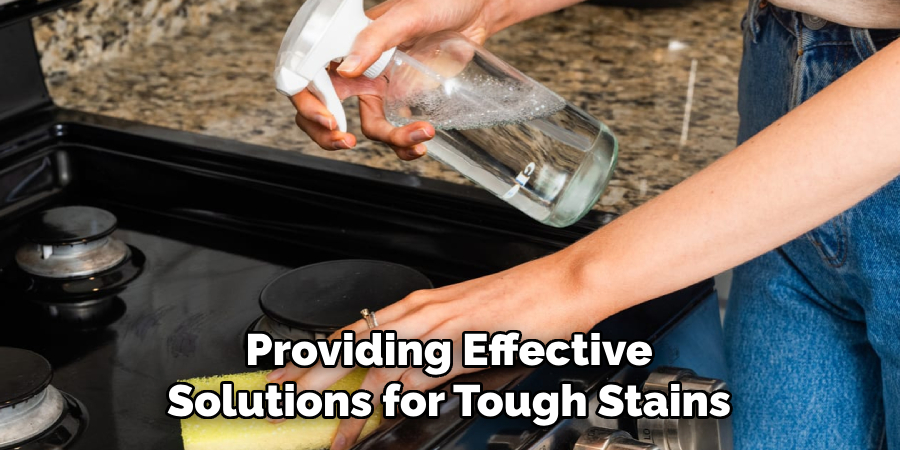
Removing Burnt-on Food with a Razor Blade
In cases where burnt-on food persists, a razor blade or scraper can be used carefully to remove the debris. Hold the razor blade at a 45-degree angle to the ceramic surface to do this safely. With gentle pressure, gradually work the blade underneath the burnt material, being cautious not to press too hard to avoid scratches. Slowly lift and scrape away the debris using smooth motions. After removing the burnt food, clean the area with a non-abrasive cleaner and a damp cloth to maintain the stove top’s pristine appearance. Always ensure the blade is sharp and intact to prevent damaging the cooktop.
Cleaning the Stove’s Burners and Elements
Cleaning the Burner Grates and Coils
Remove these components from the cooktop for stove models with removable burner grates and coils. Check your manufacturer’s manual for specific instructions on detaching these parts, as methods can vary slightly across stove models. Once removed, use warm, soapy water to thoroughly clean the grates and coils, scrubbing gently with a soft brush or sponge to remove any grease or residue. If your stove parts are dishwasher-safe, consider placing them on the top rack for an effective wash cycle. After cleaning, ensure the parts are dried thoroughly to prevent rusting or corrosion before reassembling them onto the stovetop.
Cleaning Electric or Induction Elements
First, when cleaning electric or induction elements, ensure the stove is off and completely cool. Use a soft, damp cloth paired with a gentle cleaning solution to wipe down the elements. Focus on removing any residue while being cautious not to saturate electrical components, as excess moisture can cause damage. Avoid harsh chemicals or abrasive materials that might scratch or harm the surface. Regularly maintaining these elements helps preserve the stove’s functionality and efficiency, ensuring consistent and reliable heating performance over time. Refer to your stove’s manual for any specific cleaning instructions or cautions the manufacturer provides.
Preventing Scratches and Damage
Using the Right Cleaning Tools
To maintain the integrity of your ceramic stove top, it is crucial to use non-abrasive materials like soft sponges, microfiber cloths, and plastic scrubbers. These tools effectively clean without risking scratches to the surface. Harsh scrubbing pads or steel wool should be avoided at all costs, as they can cause unsightly damage and impair the stove’s appearance. By selecting gentler materials, you can ensure a thorough cleaning while preserving the stove top’s elegant finish.
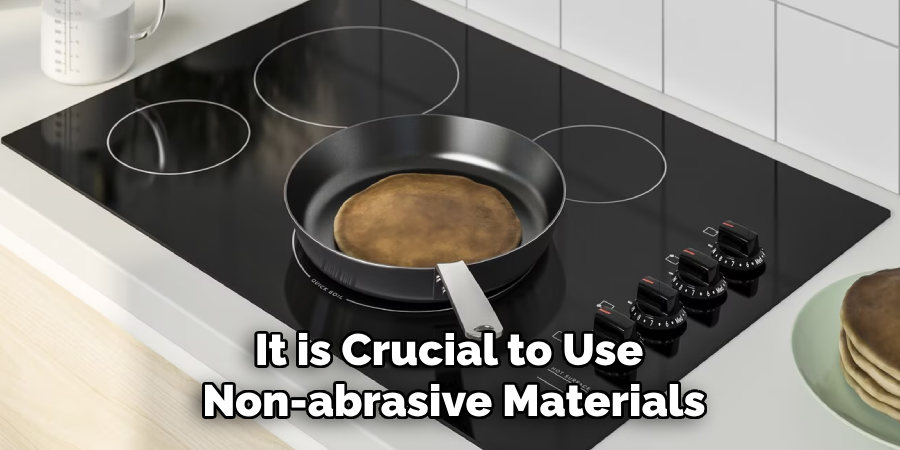
Protecting the Surface
In addition to careful cleaning, it is important to safeguard the stove top from physical damage. Avoid using heavy pots and pans that might scratch or even crack the surface upon impact. Opt for cookware that has smooth, flat bottoms, as they are less likely to cause abrasions. Consider using stove-top protectors, which offer an additional layer of defense against scratches and other forms of damage, ensuring your ceramic surface remains pristine for years to come.
Conclusion
Maintaining the appearance and functionality of a ceramic stove top is achievable with a few key cleaning methods. Regularly using gentle, non-abrasive materials, such as baking soda and vinegar, and commercial cleaners like Cerama Bryte can prevent tough stains. Incorporating these techniques into daily routines extends your stove’s lifespan and keeps it looking new. For persistent grime, careful use of a razor blade is effective. Always prioritize safety and take steps to avoid scratches. By following these tips, you’ll master how to clean ceramic stove tops, ensuring they stay safe, shiny, and scratch-free.
Specialization:
- Master of wheel-throwing, hand-building, and advanced glazing techniques
- Focus on creating both functional pottery and decorative art pieces
Recognition:
- Celebrated by collectors and art enthusiasts for creating one-of-a-kind pieces that blend artistry with functionality
- Participates in local and national exhibitions, earning accolades for his innovative designs and craftsmanship
Passion:
- Deeply committed to exploring and pushing the boundaries of ceramic artistry
- Continuously experiments with new materials, firing techniques, and artistic concepts to evolve his craft
Personal Philosophy:
- Believes in the transformative power of art, aiming to evoke emotions and connections through his ceramic creations
- Advocates for sustainability in ceramics, using eco-friendly materials and practices whenever possible


